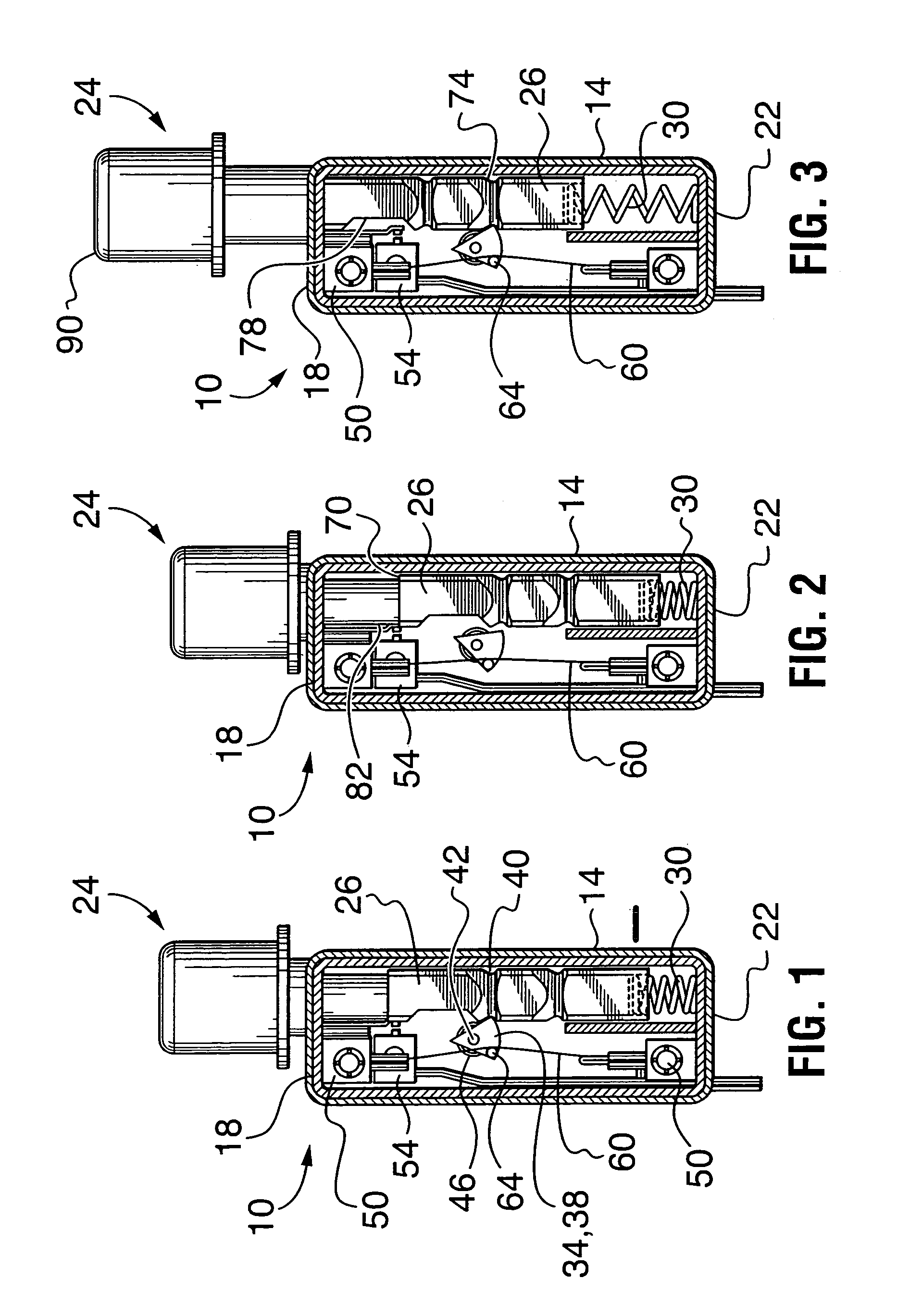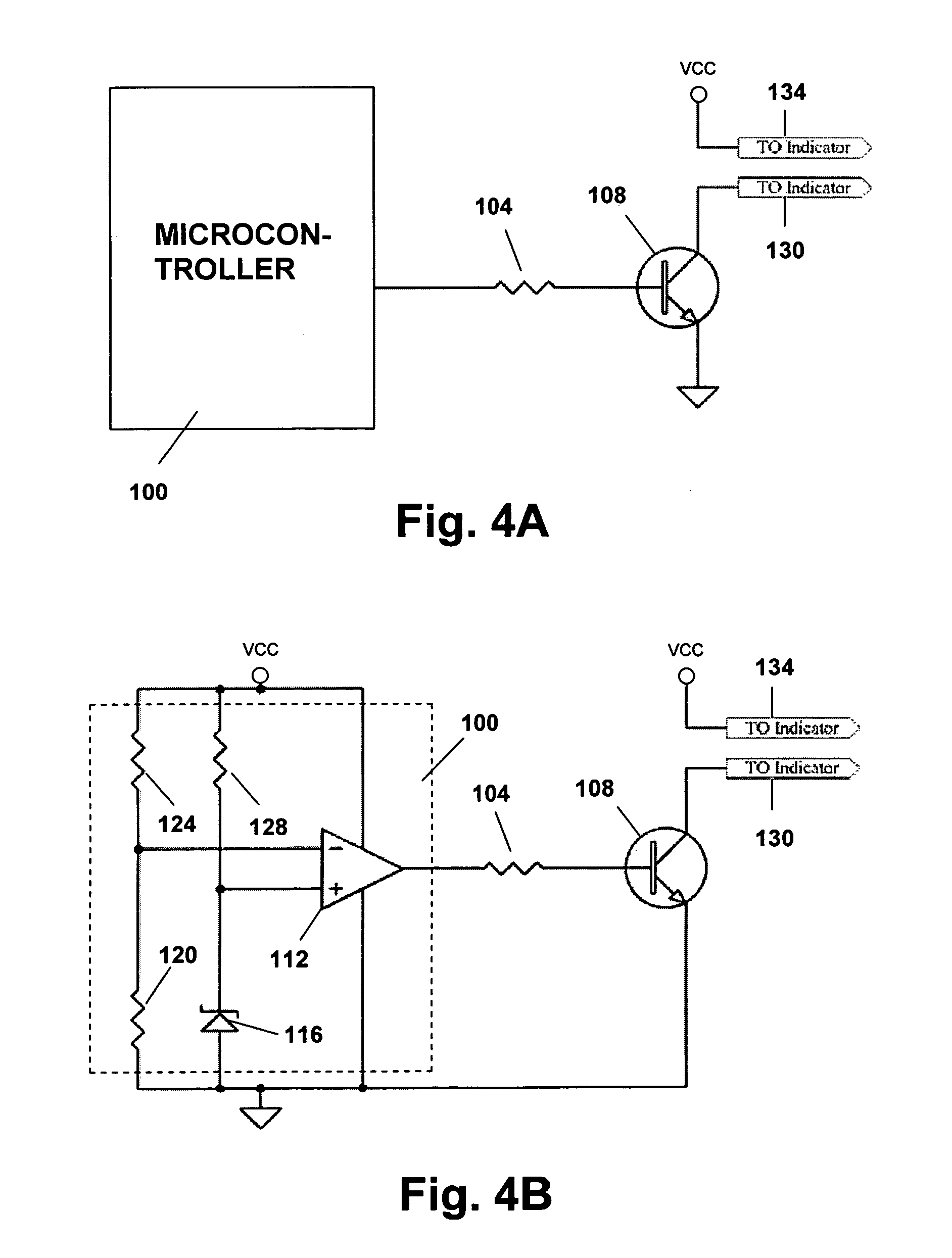Low battery indicator
a low battery and indicator technology, applied in secondary cell servicing/maintenance, instruments, heat measurement, etc., can solve the problems of increasing device complexity and cost, consuming more energy than an actuating, and consuming significant amounts of power, so as to save battery power and energy. , the effect of reducing the amount of energy
- Summary
- Abstract
- Description
- Claims
- Application Information
AI Technical Summary
Benefits of technology
Problems solved by technology
Method used
Image
Examples
Embodiment Construction
[0018]In the following description, similar features in the drawings have been given similar reference numerals.
[0019]Turning to FIG. 1, there is illustrated an indicating device 10 for indicating that a battery (not illustrated) has low power. The device 10 is not intended to be used on its own, but rather it is integrated into a device (such as a consumer electronics device) including the battery. Most of the components of the device 10 are contained within a housing 14. The housing 14 includes a top wall 18 and a bottom wall 22. The housing 14 is preferably made of plastic or any other suitable conventional material.
[0020]Indicator 24, situated outside of housing 14, has an elongated body 26 which extends between the walls 18 and 22. A portion of the body 26 also extends through an aperture in the top wall 18. The indicator 24 is preferably made of plastic; however, it can also be made of other suitable materials.
[0021]When the indicator 24 is in a retracted position as illustrat...
PUM
| Property | Measurement | Unit |
|---|---|---|
| time | aaaaa | aaaaa |
| power | aaaaa | aaaaa |
| current flow | aaaaa | aaaaa |
Abstract
Description
Claims
Application Information
 Login to View More
Login to View More - R&D
- Intellectual Property
- Life Sciences
- Materials
- Tech Scout
- Unparalleled Data Quality
- Higher Quality Content
- 60% Fewer Hallucinations
Browse by: Latest US Patents, China's latest patents, Technical Efficacy Thesaurus, Application Domain, Technology Topic, Popular Technical Reports.
© 2025 PatSnap. All rights reserved.Legal|Privacy policy|Modern Slavery Act Transparency Statement|Sitemap|About US| Contact US: help@patsnap.com



